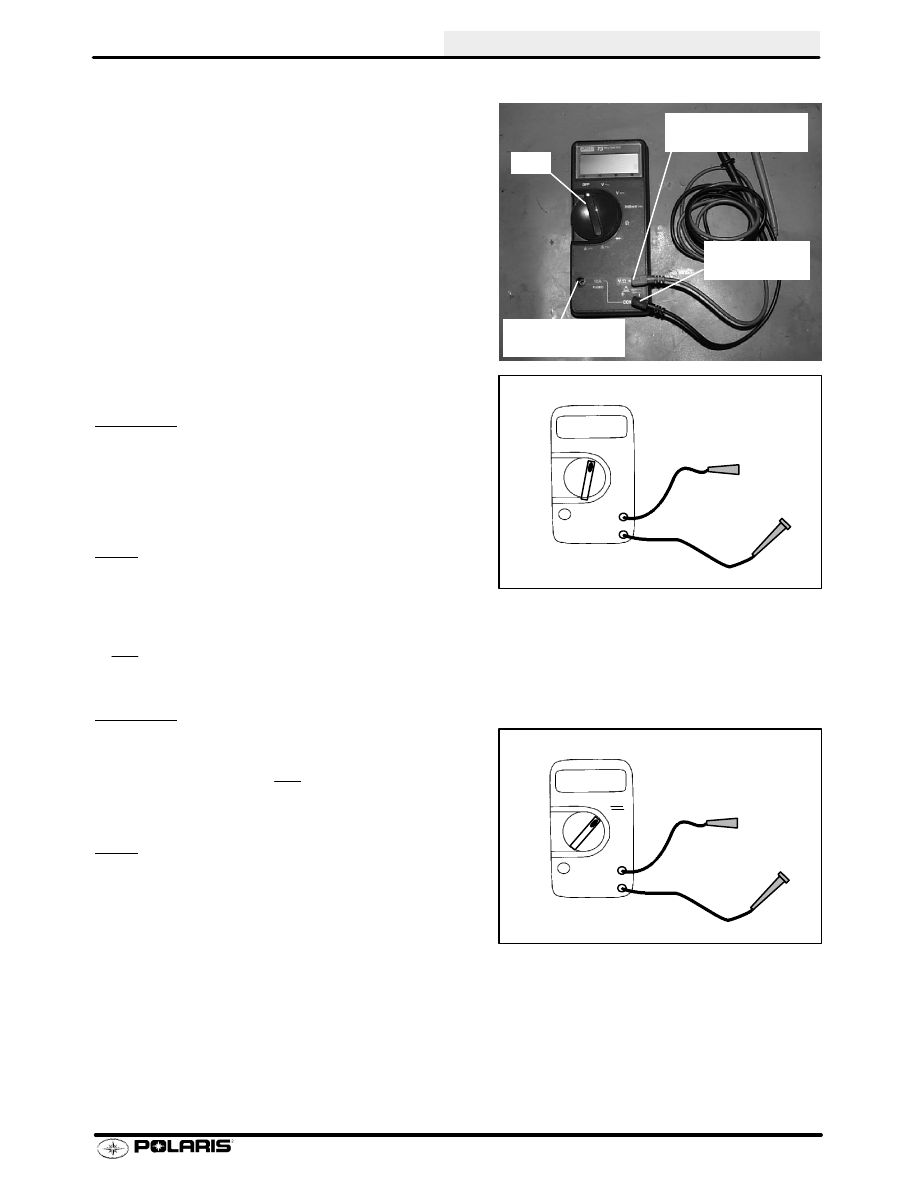Snowmobile Polaris High Performance (2001 year). Manual - part 88

ELECTRICAL
8.11
Multimeter Usage
The easiest and most accurate method for testing modern
electrical components is with a digital multitester. Any good
quality multitester will work. However, due to ease of opera-
tion and durability, Polaris recommends the Fluke Model 73
(PN 2870659), or Tektronix DMM155. See photo at right.
This instrument will provide a digital readout of the measured
value of the test being performed.
Listed below are the dial symbols, their meaning and what
the dial setting can be used for.
Off = Instrument Off
V
~
= Volts AC - measuring alternator output
Used to measure AC voltage in an electrical system. AC volt-
age is produced from every coil on the stator plate when a
magnet is passed by it.
Test Method
1.
Connect black lead to Com (--) meter terminal.
2.
Connect red lead to V
τ
(+) meter terminal.
3.
Turn selector dial to V
~
setting.
4.
Connect test leads parallel with test component. The
polarity of the leads is not important.
Usage
S
Test unregulated voltage output of a stator coil
S
Test regulated voltage to the lights and handwarm-
ers
V - - - = Volts DC - measuring battery voltage, volt drop, etc.
Used to measure DC voltage produced by a battery or rectifier.
Test Method
1.
Connect black lead to Com (--) meter terminal
2.
Connect red lead to V
τ
(+) meter terminal.
3.
Turn selector dial to V - - - setting.
4.
Connect test leads parallel with test component.
Observe polarity.
Usage
S
Test battery voltage
S
Test DC regulator
S
Test voltage drop for bad connections
S
Test supply voltage to electric fuel gauge
Dial
Red Lead here
for Volts and Ohms
Common
(Black Lead)
Red Lead here
for Amperes
+
_
17.29
V
~
VAC
+
_
12.95
V
VDC